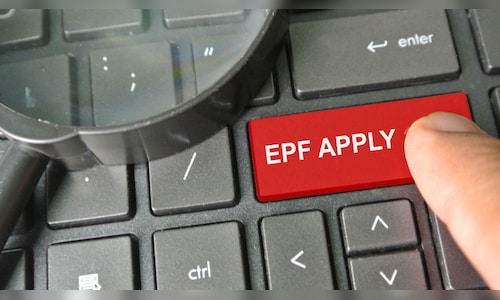Index Fund Corner
Sponsored
| Scheme Name | 1-Year Return | Invest Now | Fund Category | Expense Ratio |
|---|---|---|---|---|
| Axis Nifty 50 Index Fund | +32.80% | Invest Now | Equity: Large Cap | 0.12% |
| Axis Nifty 100 Index Fund | +38.59% | Invest Now | Equity: Large Cap | 0.21% |
| Axis Nifty Next 50 Index Fund | +71.83% | Invest Now | Equity: Large Cap | 0.25% |
| Axis Nifty 500 Index Fund | — | Invest Now | Equity: Flexi Cap | 0.10% |
| Axis Nifty Midcap 50 Index Fund | +46.03% | Invest Now | Equity: Mid Cap | 0.28% |
How Does Provident Fund Work?
Here are the basics of how the EPF works:
Step 1: Employee and Employer’s Contribution to EPF
As per the EPF rules, you have to contribute 12% of your salary to the PF account. This deduction is done by the employer at the time of salary disbursal. The employer also needs to contribute an equal amount to the EPF balance. Out of the employer’s contribution, 8.33% goes to the Employee Pension Scheme or EPS, while 3.67% goes towards EPF.
Step 2: Pooling of EPF Funds
The contributions by the employee and employer are pooled and earn an annual interest of 8% to 12%. The interest rate is determined by the government. This pooled amount will keep growing with compound interest and with each monthly contribution.
Step 3: Withdrawal of Employee Provident Fund Amount
There are 2 scenarios when it comes to withdrawing the PF amount:
In the first case, you withdraw the amount upon retirement at the age of 58. This can be done by visiting the EPFO portal.
In the second scenario, you make the withdrawal before retirement. When a person has been unemployed for over a month, they are allowed to withdraw up to 75% of their EPF amount. If a person has been unemployed for over 2 months, they can withdraw the remaining 25% as well.
Partial Withdrawals Under Specific Conditions
As per the rules, the EPF amount can be withdrawn partially under certain conditions. We have described some of them below:
Medical Treatment: In this case, a person can withdraw either six times their monthly basic salary, or the entire amount from the employee’s contribution with interest, whichever is lower.
Marriage: Up to half of the employee’s contribution can be withdrawn after 7 years of service.
Education: Up to half of the employee’s contribution can be withdrawn after 7 years of service.
EPF is among the best options for building a retirement corpus. It comes with attractive interest rates and has almost no risk because it is supported by the government. If used wisely, it can give you much-needed peace after retirement.


